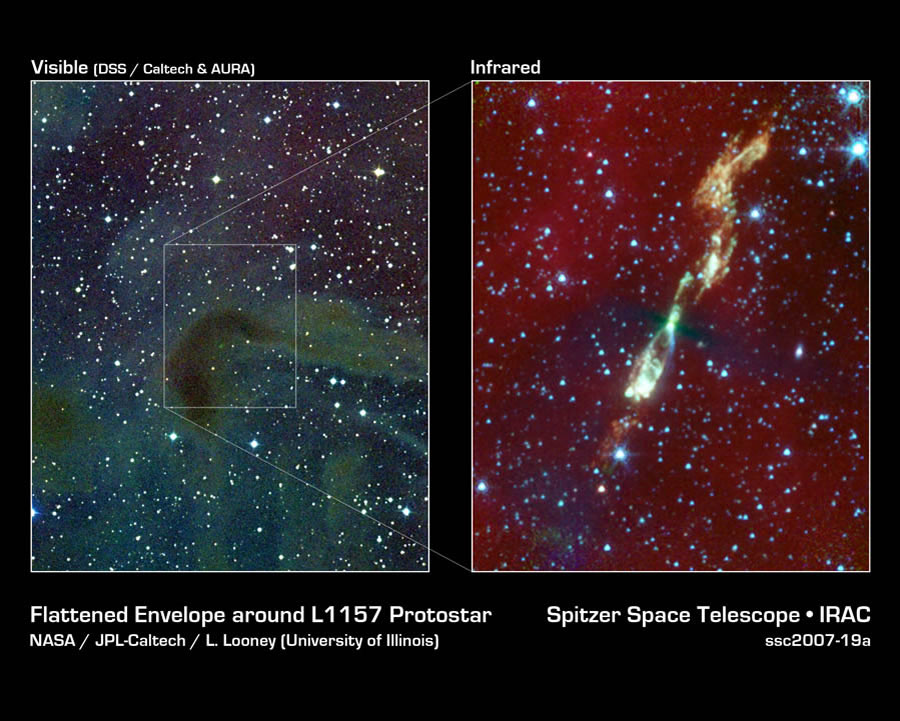Astronomers at the University of Illinois have found the first clear evidence for a cradle in space where planets and moons form. The cradle, revealed in photographs taken with NASA’s Spitzer Space Telescope, consists of a flattened envelope of gas and dust surrounding a young protostar.
“We are seeing this object in the early stages of stellar birth,” said U. of I. astronomy professor Leslie Looney, the lead author of a paper accepted for publication in Astrophysical Journal Letters. “Eventually, the protostar will form into a star much like our sun, and the disk will form into planets and moons.”
Located about 800 light-years away in the constellation Cepheus, the object is obscured by dust and therefore invisible to the eye. However, the Spitzer Space Telescope’s sensitive infrared camera can penetrate the dust, and reveal the structures within.

4.5-micron infrared light is green; and 3.6-micron infrared light is blue. The visible-light picture is from the Palomar Observatory-Space Telescope
Science Institute Digitized Sky Survey. Blue visible-light is blue; red visible light is green, and near-infrared light is red. Photo courtesy NASA
The brightest structure consists of an enormous, almost linear flow of shocked molecular hydrogen gas erupting from the protostar’s two magnetic poles. These bipolar jets are so long, light would take about 1 1/2 years to travel from one end to the other.
In star-formation theory, a cloud of gas and dust collapses to form a star and its planets. As the cloud collapses, it begins to rotate faster and faster, like a pirouetting ice skater pulling in her arms. The force of the growing magnetic field ejects some of the gas and dust along the magnetic axis, forming the bipolar jets seen in the photograph.
“If material was not shed in this fashion, the protostar’s spin would speed up so fast it would break apart,” Looney said.
The planet-forming region is perpendicular to, and roughly centered on the polar jets. There, seen in silhouette against a bright background of galactic infrared emission, is the flattened disk of a circumstellar envelope.
Theorized, but never before seen, the flattened disk is an expected outcome for cloud-collapse theories that include magnetic fields or rotation.
“Some theories had predicted that envelopes flatten as they collapse onto their stars and surrounding planet-forming disks,” Looney said, “but we hadn’t seen any strong evidence of this until now.”
With Looney, co-authors of the paper are former undergraduate student John Tobin (now at the University of Michigan) and graduate student Woojin Kwon. The Spitzer Space Telescope is operated by the Jet Propulsion Laboratory at the California Institute of Technology. Funding was provided by NASA.





Comments